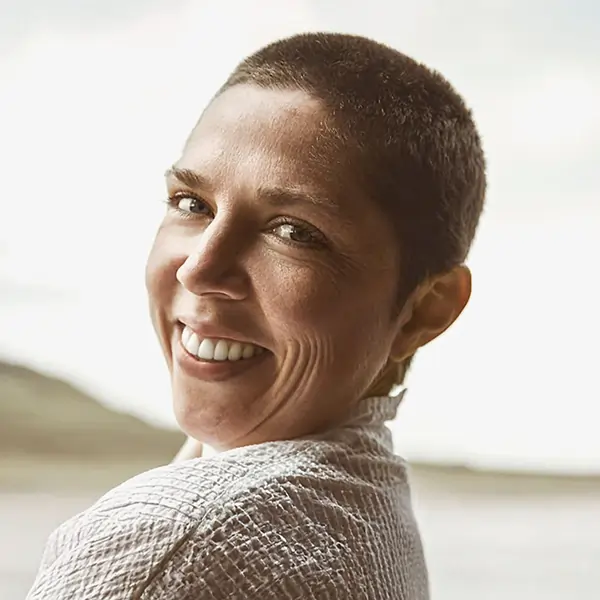Key takeaways:
Iron deficiency can cause hair loss and increased hair shedding.
Hair loss from low iron isn’t permanent. Your hair will start to grow back once your iron levels return to normal.
Oral iron supplements can help get your iron levels back to normal. Your primary care provider will help you determine the right dose for you.
Hair thinning and hair loss can be upsetting. It can affect your mood, confidence, and overall sense of well-being. Some hair thinning is normal as you age, but there are other causes of hair loss that can be stopped or reversed.
One of these is iron deficiency (low iron levels). This is a common vitamin deficiency in the U.S. — and more common than you may realize. In fact, iron deficiency has become an increasing public health concern.
If you’ve been noticing changes in your hair, here’s what you need to know about how iron deficiency can lead to hair loss.
How does iron deficiency cause hair loss?
Low iron levels have been linked to a condition called telogen effluvium, which leads to:
Increased hair shedding
Stalled hair growth
The combination of these two things leads to hair thinning and more noticeable hair loss.
Hair follicles cycle through three phases in order to grow hair:
Anagen phase: This is the active phase of hair growth. The follicle is making hair.
Catagen phase: This is the transition phase. Hair stops growing in this phase.
Telogen phase: This is the rest phase. Your hair strand falls out and the hair follicle stops forming hair for a few months.
Each hair follicle follows its own timeline as it goes through these cycles. This keeps the hair on your head from falling out all at once.
How do you test for iron deficiency? Testing for low iron isn’t straightforward. And your primary care provider may not know that the best way to test for it is with a ferritin level.
Can you have iron deficiency without anemia? Yes, and it’s surprisingly common. But many healthcare professionals don’t test for iron deficiency until it causes anemia.
Can low iron lead to weight gain? Researchers have discovered a link between low iron and weight. But the relationship is more complicated than you think.
At any given time, about 10% to 15% of hair follicles are in the telogen phase. But certain medical conditions, like iron deficiency, can push hair follicles into the telogen phase. When more hair follicles enter the resting phase at the same time, hair falls out but doesn’t grow back. This is how iron deficiency leads to hair loss.
What are the signs of hair loss from iron deficiency?
At first, people with low iron levels may notice more hair shedding than usual. Then they’ll start noticing that their hair appears thinner, especially in areas where male- or female-pattern hair loss is more noticeable.
But if you have low iron levels, you’ll likely notice other symptoms of iron deficiency like:
Feeling tired, run-down, or weak
Lightheadedness or dizziness
Feeling cold all the time
Trouble exercising
Pale skin
Read more like this
Explore these related articles, suggested for readers like you.
These symptoms can happen with iron deficiency alone. But they’re more likely when iron deficiency leads to anemia. People with anemia don’t have enough red blood cells to carry oxygen to the different parts of their body. Over time, this can lead to long-term health problems.
Is hair loss from iron deficiency permanent?
The good news is that hair loss caused by low iron isn’t permanent. Once your iron levels are back to normal, your hair follicles will move back from the resting (telogen) phase back into the active (anagen) phase.
How long does it take for hair to regrow after an iron deficiency?
Even with daily supplements, it can take several months for your body to rebuild its iron stores. And then it’ll take even more time for your hair follicles to transition back into the active phase.
You should notice less hair shedding within a few weeks of starting iron therapy. But it can take months to see your hair start to fill in.
Will taking iron supplements help with hair loss?
If you have iron deficiency or iron deficiency anemia, taking iron supplements can help reverse hair loss.
But if your iron levels are normal, you shouldn’t take iron supplements. Iron supplements won’t help hair growth if your iron levels are normal. And taking too much iron can lead to iron poisoning. If you’re experiencing hair thinning or hair loss and your iron levels are normal, talk with a healthcare professional about other treatment options for hair loss.
How much iron should you take for hair loss?
It depends. Many things affect how much iron you should take if your iron is low.
A healthcare professional will test your hemoglobin levels and iron stores. These results will help determine how much iron you need to take. Your healthcare team will also consider other factors to determine the best dose for you, like the exact cause of your iron deficiency and if you’re menstruating.
In general, people need to take an iron supplement once a day or once every other day.
Common iron supplements include:
Ferrous sulfate
Ferrous gluconate
Ferric citrate
Ferric sulfate
After a few weeks, you’ll likely have a repeat blood test to see how you’re responding to the supplements. Your healthcare team may adjust your dose from there.
Some people only need to take iron supplements for 4 to 6 weeks. But others need several months of iron therapy to replenish their iron stores.
What foods are high in iron?
If your iron levels are low, it’s also helpful to eat foods rich in iron like:
Seafood, fish, and lean red meat
Dark, leafy, green vegetables like spinach
Lentils, beans, peas, and potatoes
Nuts, seeds, and some dried fruits
Grains and cereals enriched in iron
Dried fruit
Tofu
Eggs
It’s also important to know that some foods, like black tea, can decrease your iron absorption.
Vitamin C for iron absorption
Vitamin C helps your body absorb iron. So consider adding foods and drinks rich in vitamin C alongside foods high in iron. Some good sources of vitamin C include:
Guava
Papaya
Kiwi
Mango
Strawberries
Cantaloupe
Oranges
Tangerines
Grapefruit
Sweet peppers
Broccoli
Tomatoes
Frequently asked questions
It can take weeks to even months for iron tables to reverse hair loss. First, this depends on your iron levels and how long it takes to get them back to normal. Once your iron levels are back to normal, you’ll notice less hair shedding. But it will take several more weeks for your hair to start to fill back in.
Based on a standard serving for that food, the foods that are highest in iron are:
Fortified cereal
Steak
Oysters
White beans
Spinach
Research has suggested a link between low iron and weight gain. But this doesn’t mean that low iron is the cause of weight gain. It may actually be the other way around — weight gain may lead to low iron levels. That being said, low iron may contribute to weight gain because of the way it affects energy levels, metabolism, and thyroid function.
It can take weeks to even months for iron tables to reverse hair loss. First, this depends on your iron levels and how long it takes to get them back to normal. Once your iron levels are back to normal, you’ll notice less hair shedding. But it will take several more weeks for your hair to start to fill back in.
Based on a standard serving for that food, the foods that are highest in iron are:
Fortified cereal
Steak
Oysters
White beans
Spinach
Research has suggested a link between low iron and weight gain. But this doesn’t mean that low iron is the cause of weight gain. It may actually be the other way around — weight gain may lead to low iron levels. That being said, low iron may contribute to weight gain because of the way it affects energy levels, metabolism, and thyroid function.
The bottom line
Low iron levels can lead to hair loss. Iron deficiency can trigger a condition called telogen effluvium, which increases hair shedding and decreases hair growth. But this can be reversed once you get your iron levels back to normal. Oral iron supplements are the main treatment for low iron levels. But you can also help maintain your body’s iron levels by eating iron-rich foods.

Why trust our experts?


References
Hoover, E., et al. (2023). Physiology, hair. StatPearls.
Moeinvaziri, M., et al. (2009). Iron status in diffuse telogen hair loss among women. Acta Dermatovenerologica Croatica.
Moretti, D., et al. (2015). Oral iron supplements increase hepcidin and decrease iron absorption from daily or twice-daily doses in iron-depleted young women. Blood.
Olsen, E. A., et al. (2010). Iron deficiency in female pattern hair loss, chronic telogen effluvium, and control groups. Journal of the American Academy of Dermatology.
Tawfik, Y. M. K., et al. (2024). Absolute and functional iron deficiency in the US, 2017-2020. JAMA Network Open.
Whitbread, D. (2024). Top 10 foods highest in iron. MyFoodData.

















